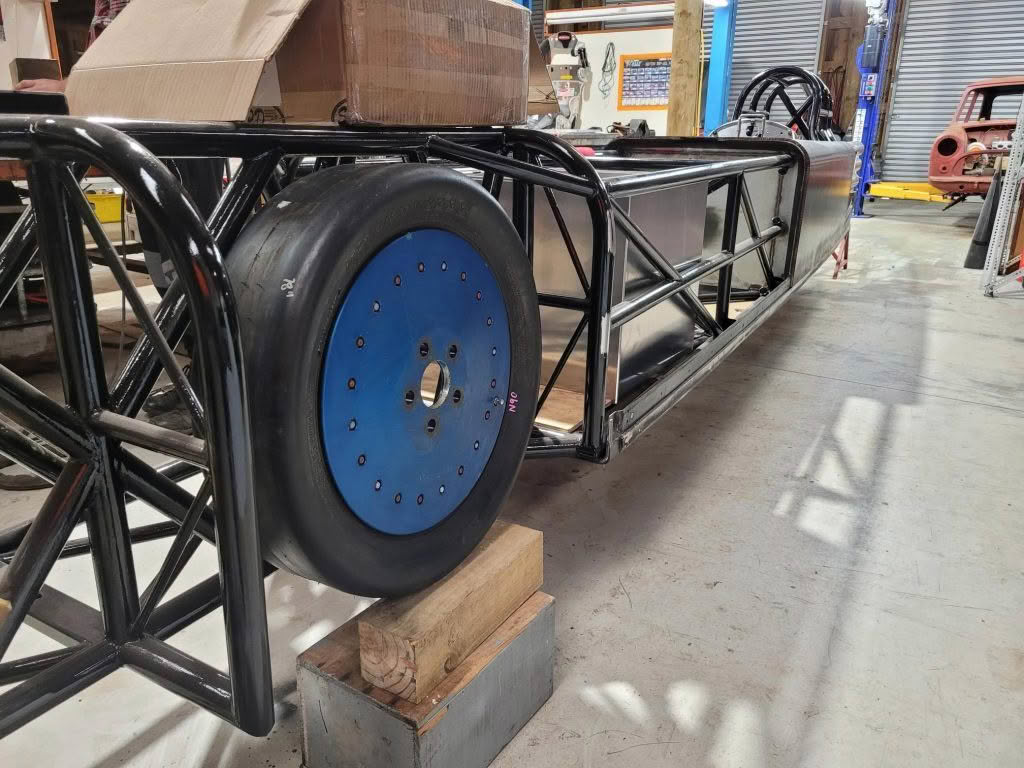Knowledge sharing within the racing fraternity from Renown LSR Racer Tom Burkland from Montana USA.
For the application where the tires are about to be “stretched”, and the growth measured for a very low probability of a tire failure occurring during the testing.
If you are starting over with a tire spinner, you might want to consider a modern transverse engine and transaxle package as the power source, to potentially improve reliability and durability. One might even be able to lock the axle shaft on the unused side to drive the other side at 2:1 through the differential of the OEM application. Get to understand the bearings and lubrication required inside the differential if you use it for part of the overdrive, with one side locked and the other running above the carriers rpm level.
Many of the Honda K series four cylinders already have final drive ratios approaching 2.0:1, so the differential lock on one side would provide an output shaft at near engine speed, which could easily go 6500-7000 on the K20 or K24. It would still be a good idea to provide the shock load release of the belt drive between this output axle, and the actual spinning support to reduce inflicted damage in the event of a tire failure, or even balance weight departure that would shake the entire machine.
It would be a bit more fabrication effort but it would be feasible to build the entire machine with just the engine and the belt drive to spin the support axle. The drive pulley could be bolted directly to the crankshaft flange with the belt spinning the driven pulley on the spinner axle. A flex plate or flywheel with starting ring gear on the engine would be required to spin it over at the start of each test.
If these simplified drivetrains were built it would probably make sense to mount the whole deal up on some sort of light weight single axle trailer, for mobility and positioning during the actual testing.
Our initial spinner used a two stroke snowmobile engine with approximately 80HP and turned out to not have enough power to spin the mounted tire/wheel up to the required rpm in stable form. The current machine uses a 318 Chrysler V8 with automatic transmission in a 4WD Ramcharger, the rear drive shaft powers the spinning axle in 2HI, locking the transfer case in 4HI allows it to be driven to the test site with front wheel drive. No shortage of power and easy smooth throttle operation to control tire speed. We have used Red Lion inductive pickup tachometer systems to display actual spindle rpm of the tested tire. Make sure you have enough resolution on the sensor and axle mounted toothed wheel to read the rpm in stable form up to 9000 rpm or so.
These spinning machines do not have to be anything complicated, but you will want plenty of strength and speed margin on the equipment for it to run reliably and accomplish the goal of testing each tire before it goes on the car and establishing the growth diameter, so you can match them up as sets of four for the dual axle front of your car.
If you have the understanding and/or expertise in the above, come and be part of the team that develops our KIWI CAN DO CMR 600 Mph Tyre Spinner here in Auckland NZ.
